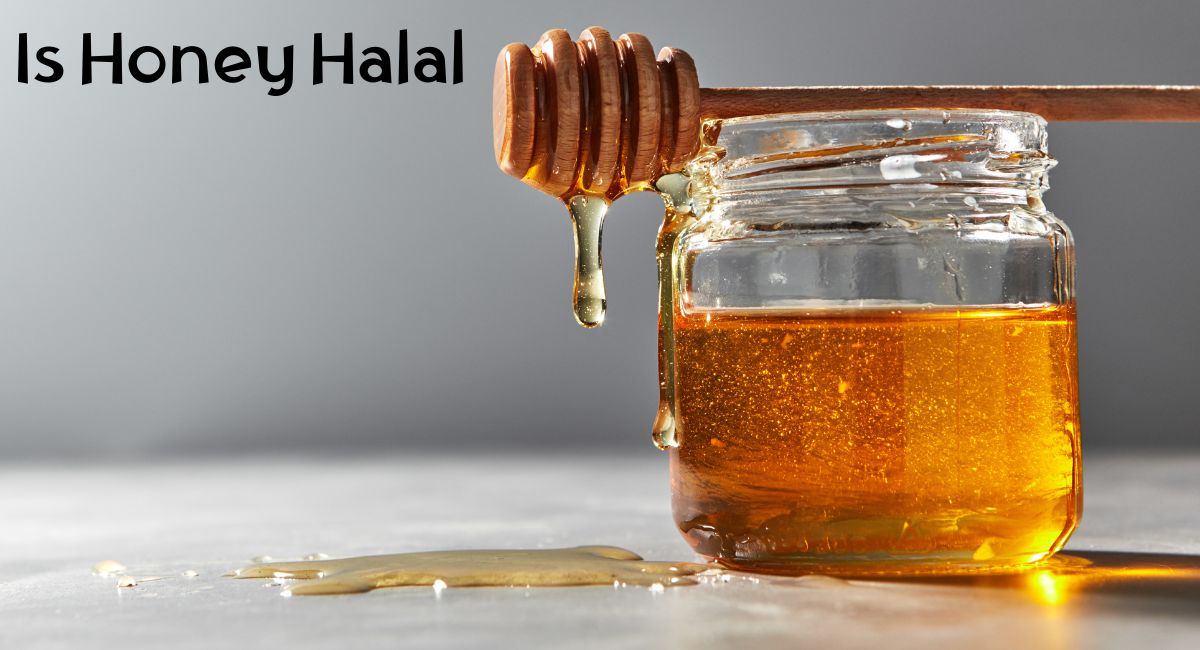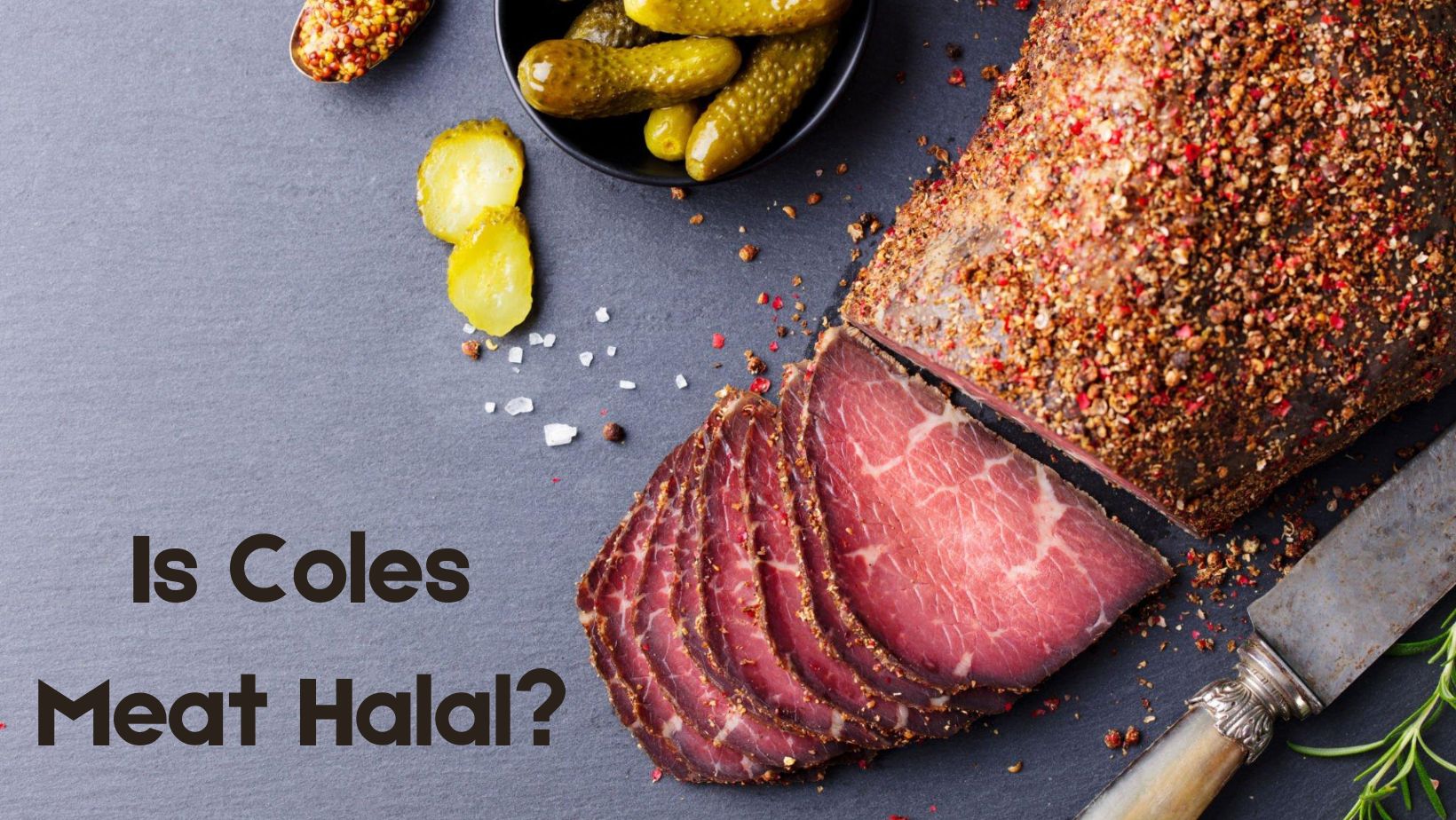Honey, often referred to as nature’s golden nectar, has been cherished for its sweetness and nutritional benefits for centuries. However, for those following the dietary restrictions of the Islamic faith, questions often arise regarding the permissibility of consuming honey.
In this comprehensive article, we will delve into the world of honey from an Islamic perspective, exploring the concepts of Halal (permissible) and Haram (forbidden) in relation to this delectable substance.
We will examine the general principles of Halal food, address specific queries such as “Is Manuka Honey Halal?” and “Is Capilano Honey Halal?” We will also explore the intriguing world of fermented honey and its Halal status, as well as shedding light on the process of honey production.
Moreover, we will discuss the various types of honey and their potential Halal implications, and finally, we will explore the diverse culinary uses of honey, offering insight into how it can be incorporated into a Halal diet.
So, let’s embark on this sweet journey to uncover the Halal status of honey and expand our understanding of this beloved natural wonder.
Is Honey Halal
According to the Islamic Religious Council of Singapore (Muis), honey in its pure form does not need to be halal-certified. However, if flavourings or additives are being added, it would need a halal certification to be considered halal.

The permissibility of consuming honey in Islam is based on religious texts and interpretations. Here’s a general overview:
Quranic Reference: Honey is mentioned in the Quran as a beneficial food. The Quran says in Surah An-Nahl (16:69): “And your Lord inspired the bee, saying: ‘Take you habitations in the mountains and in the trees and in what they erect. Then, eat of all fruits, and follow the ways of your Lord made easy (for you).’ There comes forth from their bellies, a drink of varying color wherein is healing for men. Verily, in this is indeed a sign for people who think.”
This verse not only highlights the miraculous nature of bees but also emphasizes the healing properties of honey.
Hadith: There are several Hadiths (sayings of the Prophet Muhammad, peace be upon him) that mention the medicinal and health benefits of honey.
- Healing Properties of Honey – Narrated by Abu Said Al-Khudri: “A man came to the Prophet and said, ‘My brother has some abdominal trouble.’ The Prophet said to him, ‘Let him drink honey.’ The man came for the second time and the Prophet said to him, ‘Let him drink honey.’ He came for the third time and the Prophet said, ‘Let him drink honey.’ He returned again and said, ‘I have done that.’ The Prophet then said, ‘Allah has said the truth, but your brother’s abdomen has told a lie. Let him drink honey.’ So he made him drink honey and he was cured.” (Sahih al-Bukhari, Book 76, Hadith 68)
- Honey as a Blessing – Narrated by Abdullah ibn Mas’ud: “The Prophet said, ‘Make use of the two remedies: honey and the Quran.'” (Tirmidhi, Hadith 2046)
- Honey as a Nutritious Food – Narrated by Abu Musa: “The Prophet said, ‘There is a cure in three things: in the cut of a cupper, in drinking honey, and in cauterizing with fire, but I forbid my followers to use cauterization.'” (Sahih al-Bukhari, Book 76, Hadith 71)
Considerations: While honey itself is halal, there might be considerations regarding how it’s processed or if anything is added to it. For instance, if alcohol or other haram (forbidden) substances are added to honey during processing, it would not be permissible to consume. Therefore, it’s always a good idea to check the ingredients and processing methods if you’re concerned about the halal status of a particular honey product.
Certifications: Many countries and organizations offer Halal certification for various products, including honey. If someone is concerned about the purity or authenticity of the honey they are purchasing, they can look for products that have been certified Halal by a reputable organization.
However, it’s always a good idea for individuals to consult with knowledgeable Islamic scholars or local religious authorities if they have specific questions or concerns about the permissibility of certain products or practices.
According to Halalharam.org, here are some halal honey brands
| Brand | Product Name | Status |
|---|---|---|
| Winston | Honey | Halal |
| Sue Bee | Honey | Halal |
| Stoller’s | Honey | Halal |
| Sandt’s | Honey | Halal |
| Robb Ross | Honey | Halal |
| Rice’s | Honey Clover | Halal |
| Red Wing | Honey | Halal |
| La Flor | Honey | Halal |
| Heinz | Honey | Halal |
| Hauke | Honey | Halal |
| Groeb | Honey | Halal |
| Great Lakes | Honey | Halal |
| Elwood | Honey | Halal |
| Draper’s | Alfalfa Honey | Halal |
| Draper’s | Basswood Honey | Halal |
| Draper’s | Buckwheat Honey | Halal |
| Draper’s | Clover Honey | Halal |
| Draper’s | Comb Honey | Halal |
| Draper’s | Crystallized Honey | Halal |
| Draper’s | Goldenrod Honey | Halal |
| Draper’s | Orange Blossom Honey | Halal |
| Draper’s | Sourwood Honey | Halal |
| Draper’s | Tulip Poplar Honey | Halal |
| Draper’s | Tupelo Honey | Halal |
| Draper’s | Wild?ower Honey | Halal |
| Deer Creek | Honey | Halal |
| Baker’s Choice | Honey | Halal |
| Sahadi | Wildflower Honey | Halal |
Is Manuka Honey Halal
Based on the information available on Manuka Honey of NZ, certain Manuka honey products have been certified as halal. These products have undergone a rigorous certification process by independent, accredited Halal certification bodies.
The certification ensures that the honey is produced, processed, and packaged in a manner that complies with Islamic dietary guidelines.
The following Manuka Honey brands are halal certified:
- Abeeco
- Comvita
- Egmont Honey
- Haddrell’s Of Cambridge
- Manuka Doctor
- Manuka Health
- Manuka South
- O Manuka
- Puriti
- Streamland
- Whittaker’s
Is Capilano Honey Halal
Yes, Capilano Honey is halal certified by the Western Australia Halal Authority (WAHA). This means that it has been produced and manufactured in accordance with halal standards and regulations. The halal certification ensures that the honey has been obtained ethically, without any haram (forbidden) ingredients or practices.
The Capilano brand has been providing pure, natural honey to generations since 1953. They use 100% pure Australian honey sourced from their nationwide network of beekeeper families. The company promises to love and care for the bees that make the honey and support the beekeepers that harvest it.
Is Fermented Honey Halal
According to IslamQA, the permissibility of consuming fermented honey depends on whether or not it has any intoxicating effects. In the Hanafi, Maliki, Shafi’i, and Hanbali schools of thought, it is permissible to consume fermented honey as long as it does not have an intoxicating effect. This means that if the honey has started to bubble and smell fermented, it can still be used and the resulting drink can be consumed as long as it does not cause intoxication.
It is important to note that intoxication is strictly prohibited in Islam. The consumption of any substance that leads to intoxication or impairment of one’s faculties is haram, or forbidden. This includes alcoholic beverages and any other substances that have intoxicating effects.
Mead, the drink made from fermented honey, is popular in many cultures and is enjoyed by many people. If the mead does not have any intoxicating effects, it is considered permissible to consume it according to the Hanafi, Maliki, Shafi’i, and Hanbali schools of thought.
It is always advisable to exercise caution when consuming any food or drink that has undergone fermentation. If there is any doubt about the intoxicating effects of the product, it is best to avoid consuming it altogether.
How is Honey Made
Honey is a sweet and viscous liquid that is produced by honey bees (Apis mellifera) through a fascinating process that involves collecting nectar from flowers and then transforming it into honey within the hive.
Here’s a step-by-step overview of how honey is made:
Nectar Collection: Worker bees, which are female bees, forage for nectar from flowers. They use their long, tube-like tongues (proboscises) to suck up the sugary nectar from the blossoms of various plants. Nectar is primarily composed of water and sugars, mainly glucose and fructose.
Nectar Transportation: Once a worker bee has collected nectar from flowers, she stores it in her honey sac, a specialized stomach for carrying nectar. Worker bees can carry about 70-80 mg of nectar in their honey sacs.
Return to the Hive: The foraging bee returns to the hive with the collected nectar in her honey sac. She regurgitates the nectar into the mouth of another bee in the hive, which is often referred to as “nectar sharing” or “trophallaxis.” This bee may further process the nectar by adding enzymes like invertase.
Evaporation and Enzymatic Processing: The nectar, now in the hive, undergoes a process of evaporation and enzymatic conversion. Worker bees fan their wings to create airflow within the hive, which helps to reduce the water content of the nectar. This process of water removal thickens the nectar into a syrupy substance.
Enzymatic Conversion: Bees also add enzymes, particularly invertase, to the nectar. Invertase breaks down the sucrose in the nectar into glucose and fructose, which are simpler sugars and more easily digestible.
Storage and Ripening: The transformed nectar, now known as honey, is placed into wax honeycomb cells within the hive. Bees seal these cells with beeswax to protect the honey from moisture and contaminants. The bees then allow the honey to “ripen” by continuing to evaporate any remaining water and further enzymatic activity.
Capping: When the honey is sufficiently thickened and its moisture content reduced to around 17-20%, the worker bees seal the cells with a final layer of wax, creating a capped honeycomb cell. This sealing process preserves the honey for long-term storage.
Harvesting: Beekeepers harvest honey by removing frames of capped honeycomb from the beehive. The honeycomb frames are then extracted to separate the honey from the wax.
Filtering and Packaging: The extracted honey is usually filtered to remove any remaining impurities or bits of wax. Once filtered, the honey is ready for packaging in jars or bottles.
Types of Honey
There are many different types of honey available, each with its own unique flavor, aroma, color, and texture. The specific characteristics of honey can vary based on the types of flowers and plants from which bees collect nectar. Here are some common types of honey:
- Clover Honey: Clover honey is one of the most popular and widely available types of honey. It is made primarily from the nectar of clover blossoms and has a mild, sweet, and slightly floral flavor. It is typically light in color.
- Wildflower Honey: Wildflower honey is derived from the nectar of various wildflowers and plants. It can vary greatly in flavor and color depending on the region and the specific plants in the area. It often has a complex, robust flavor.
- Acacia Honey: Acacia honey comes from the nectar of acacia tree blossoms. It is known for its light color and mild, delicate flavor with hints of vanilla. Acacia honey remains liquid for a long time due to its low sugar crystallization tendency.
- Lavender Honey: Lavender honey is produced from the nectar of lavender flowers. It has a distinctive floral aroma and a light, fruity flavor with subtle herbal notes. This honey is often used in desserts and tea.
- Manuka Honey: Manuka honey is produced by bees that collect nectar from the Manuka tree in New Zealand and parts of Australia. It is renowned for its strong antibacterial properties and is used for medicinal purposes. Manuka honey has a unique, strong flavor with earthy and medicinal notes.
- Orange Blossom Honey: Orange blossom honey is made from the nectar of orange tree blossoms. It has a citrusy aroma and a sweet, fruity flavor with hints of orange blossom. This honey is commonly used in desserts and tea.
- Buckwheat Honey: Buckwheat honey has a dark amber to nearly black color and a robust, molasses-like flavor. It is rich and full-bodied with a slightly bitter aftertaste. Buckwheat honey is often enjoyed in baked goods and as a natural sweetener.
- Eucalyptus Honey: Eucalyptus honey is made from the nectar of eucalyptus tree blossoms. It has a bold, slightly medicinal flavor and a dark amber color. Eucalyptus honey is popular in Australia.
- Heather Honey: Heather honey is produced from the nectar of heather plants. It has a strong, distinctive flavor with herbal and slightly smoky notes. Heather honey varies in color from amber to dark brown.
- Chestnut Honey: Chestnut honey is made from chestnut tree blossoms and has a dark color and a bold, earthy flavor with nutty undertones. It is commonly used in savory dishes and cheese pairings.
These are just a few examples of the many types of honey available around the world. The characteristics of honey can vary not only based on the type of flower or plant but also on the geographical region, climate, and beekeeping practices. Each type of honey offers a unique taste experience and can be used in various culinary and medicinal applications.
Culinary Uses of Honey
Honey is a versatile natural sweetener that has been used in culinary applications for thousands of years. Its unique flavor, sweetness, and texture make it a popular ingredient in a wide range of dishes and beverages. Here are some common culinary uses of honey:
- Sweetening: The most straightforward use of honey is as a natural sweetener. It can be added to hot and cold beverages like tea, coffee, and smoothies, as well as used to sweeten cereals, yogurt, and oatmeal.
- Baking: Honey is often used in baking to add sweetness, moisture, and flavor to a variety of recipes. It can replace some or all of the sugar in recipes for cookies, cakes, muffins, and bread. Honey can also be used in pie fillings and glazes for a glossy finish.
- Marinades and Sauces: Honey is an excellent component of marinades for meat, poultry, and seafood. Its natural sugars caramelize when grilled, creating a flavorful crust. Honey is also used to make sweet and savory sauces for dishes like stir-fries, barbecue, and salad dressings.
- Dressings and Vinaigrettes: Honey can be incorporated into salad dressings and vinaigrettes to balance out acidity and add sweetness. Combining honey with ingredients like olive oil, vinegar, mustard, and herbs can create delicious dressings.
- Glazing: Honey is frequently used to glaze roasted or grilled meats and vegetables. It adds a glossy finish and enhances the flavor. Honey-glazed ham is a classic example.
- Desserts: Honey is a key ingredient in various desserts. It can be drizzled over fresh fruit, yogurt, ice cream, or cheese. Baklava, a popular Middle Eastern pastry, is made with layers of phyllo dough, nuts, and honey.
- Candying: Honey can be used to candy or crystallize fruits and nuts, creating sweet and crunchy snacks or toppings for desserts and salads.
- Cheese Pairing: Honey pairs exceptionally well with cheese. It can be served alongside a cheese platter and used to drizzle over or dip cheese, especially with varieties like goat cheese or blue cheese.
- Preserves and Jams: Honey can be used as a natural sweetener and preservative when making homemade jams, jellies, and fruit preserves.
- Hot Toddy: Honey is a common ingredient in hot toddy recipes, where it combines with hot water, whiskey, and lemon for a soothing and comforting drink, especially during cold weather.
- Smoothie Sweetener: In addition to sweetening smoothies, honey can provide a depth of flavor to fruit and vegetable blends.
- Energy Bars: Honey is often used as a binding and sweetening agent in homemade energy bars, granola bars, and protein bars.
- Asian Cuisine: Honey is used in various Asian dishes and sauces, including honey chicken, honey garlic shrimp, and honey sesame noodles.
- Meat and Vegetable Glazing: Honey can be used to glaze roasted or grilled vegetables, giving them a sweet and caramelized flavor.
- Tea Infusion: Honey can be infused with herbs and spices to create flavored honey, which can be used to sweeten tea or as a spread.
When using honey in recipes, keep in mind that it can vary in flavor and intensity depending on its type (e.g., clover, acacia, or wildflower honey), so you may want to experiment to find the perfect match for your dishes. Additionally, honey is hygroscopic, meaning it attracts moisture, so it can help keep baked goods moist and extend their shelf life.
Unlock a treasure trove of information on the halal status of various food spreads by delving into these comprehensive guides. Gain the knowledge you need to make halal-conscious choices for your favorite spreads.
Is Nutella Haram: Discover whether Nutella, the beloved hazelnut chocolate spread, aligns with halal dietary guidelines. Dive into the details on its ingredients and production processes in this insightful article.
Is Hartleys Jelly Haram: Delve into the world of Hartley’s Jelly and its halal status. Explore the ingredients and preparation methods that determine whether this fruity dessert is compatible with your dietary preferences.






